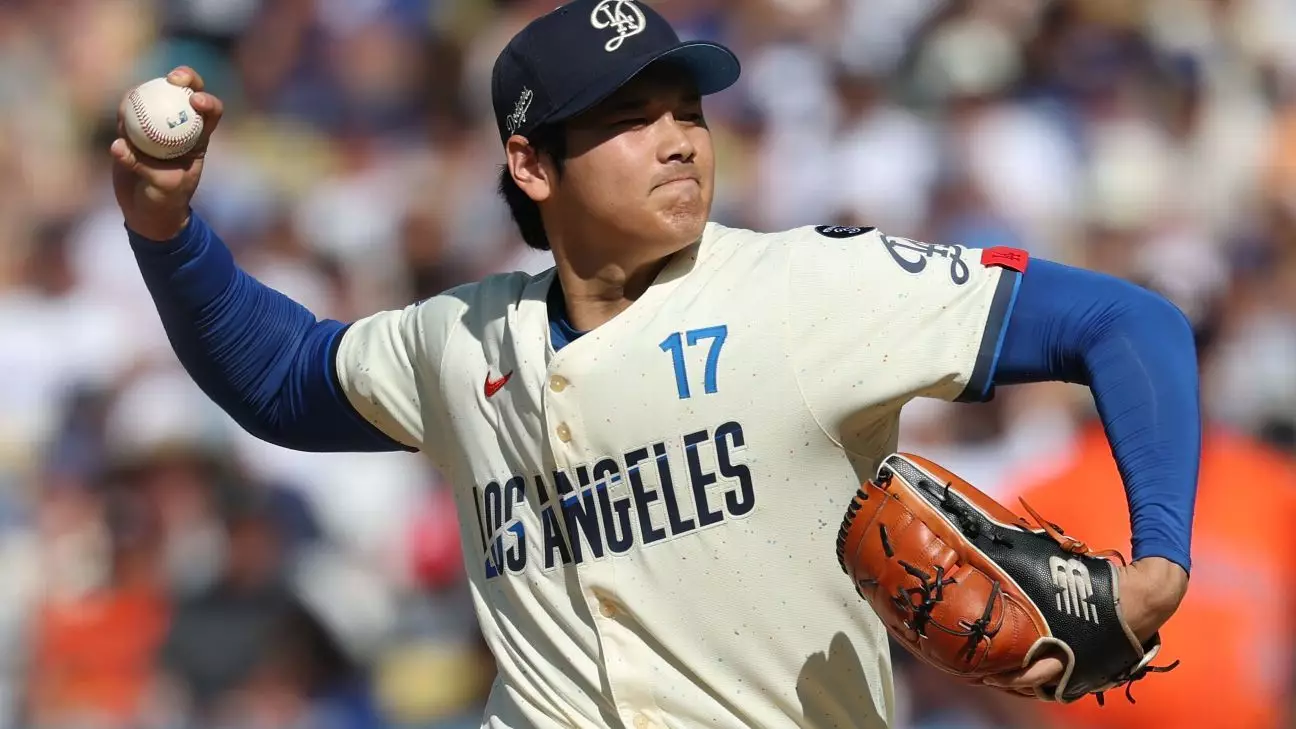Shohei Ohtani’s recent performance on the mound marks a pivotal moment in his journey back from elbow surgery, showcasing not only his resilience but also his evolving mastery of pitching. The imagery of a star working through a comeback is compelling: a two-way athlete balancing both offensive and pitching responsibilities while navigating recovery. Ohtani’s ability to strike out three consecutive batters and toss two scoreless innings reflects a level of control and confidence that is sometimes overlooked given his dual roles.
His outing, characterized by precision and careful management of velocity, reveals a mature approach to pitching. The fact that he touched the triple digits only once suggests an intentional shift away from sheer velocity toward command and control. This strategic adjustment signifies growth—a deliberate move toward sustainability and efficiency rather than relying solely on overpowering fastballs. The praise from Dodgers manager Dave Roberts underscores this, emphasizing how Ohtani’s “stuff continues to get better,” which could bode well for his future as both a pitcher and hitter.
Understanding the Impact of His Performance
Beyond the immediate statistics, Ohtani’s outing exemplifies a broader narrative: a star athlete overcoming setbacks, redefining his limits, and inspiring confidence in his team. His performance can be seen as a testament to mental toughness, an essential trait for athletes recovering from major surgeries. Moreover, his ability to effectively retire the first sequence of batters—grounding into a double play and ending on just ten pitches—demonstrates efficiency that is often hard to achieve in his situation.
The environment around him further amplifies his significance. The playful gesture of the Dodgers’ grounds crew writing “HB Sho” in the dirt and organist Dieter Ruehle playing a snippet of “Happy Birthday” humanize the moment, blending camaraderie with celebration of effort. Ohtani’s modest response about birthdays, emphasizing a focus on playing rather than personal milestones, reveals his grounded mindset—a professional who prioritizes his craft over superficial accolades.
The Broader Implications for Ohtani’s Career
Ohtani’s ability to rebound swiftly and perform at a high level signifies more than just batting prowess; it emphasizes his versatility and resilience. His prior history with the Angels, with 86 mound starts and a 3.01 ERA, indicates his elite talent, but his recent return underlines an essential narrative: that health, adaptability, and mental strength are just as crucial as raw ability.
This period marks a potential turning point. Each outing provides insight into how well he can manage workload and recover under pressure. His comment about recognizing pitches better and adjusting his swing further illustrates a maturity that teams and fans alike should take note of. It’s not merely about throwing fast—it’s about strategic execution, patience, and fatigue management.
Reflections on His Offensive Contribution and Future Outlook
While Ohtani continues to impress on the mound, his contributions at the plate remain integral. His selection of a leadoff single and subsequent offensive actions display his continued importance in the Dodgers’ lineup. His frank admission about recognizing pitches he should be hitting but isn’t yet consistent with hints at areas for improvement, yet it also highlights his unwavering commitment to self-improvement.
Looking ahead, Ohtani’s trajectory suggests that he will be a key figure not only in the Dodgers’ immediate success but also in shaping how pitchers recover from serious injuries. The balance he seeks to find—between power, control, and durability—is a blueprint for future stars facing setbacks. His journey symbolizes hope, demonstrating that with dedication and adaptive strategy, peak performance remains within reach, even after significant adversity.


Leave a Reply